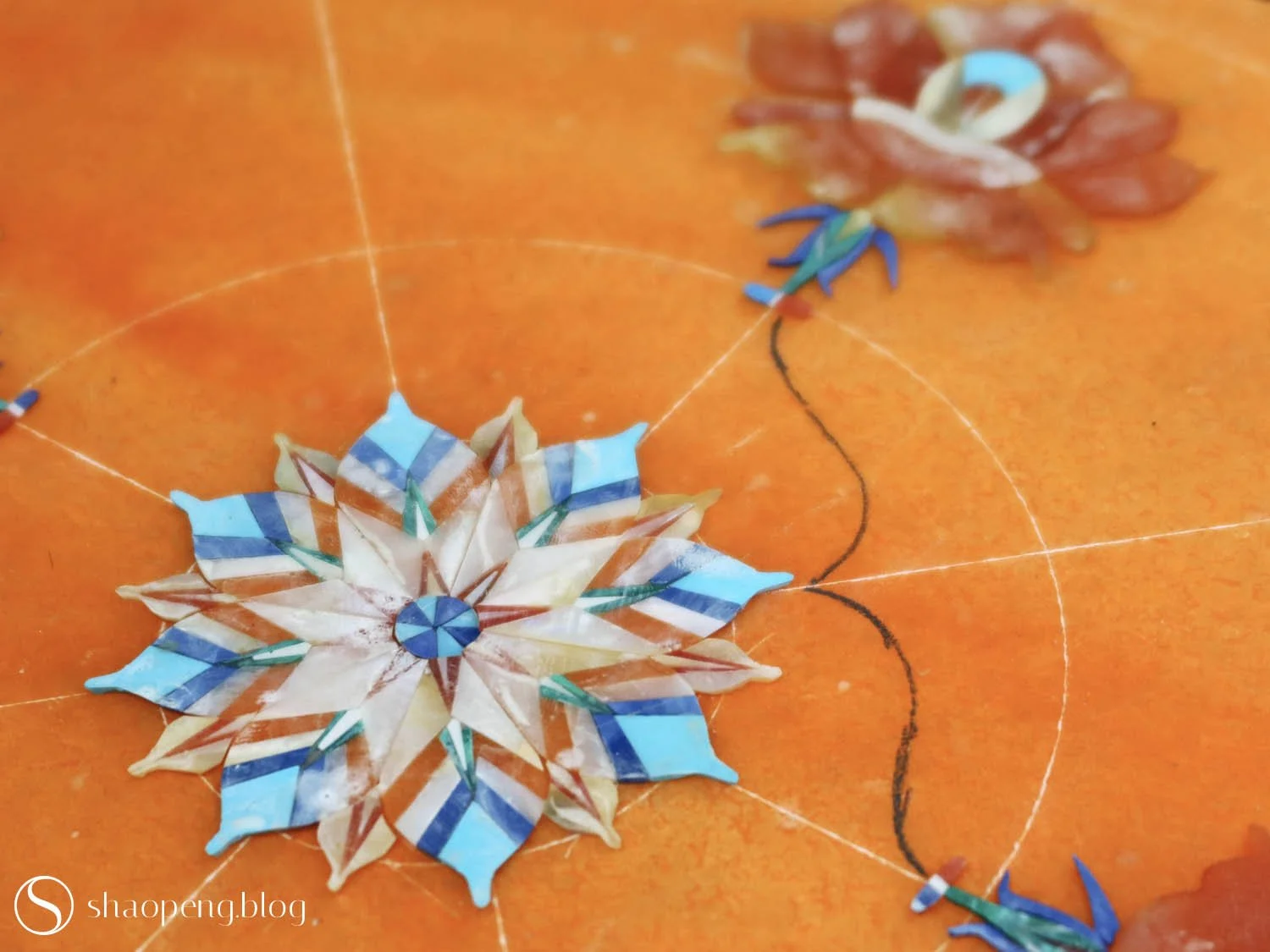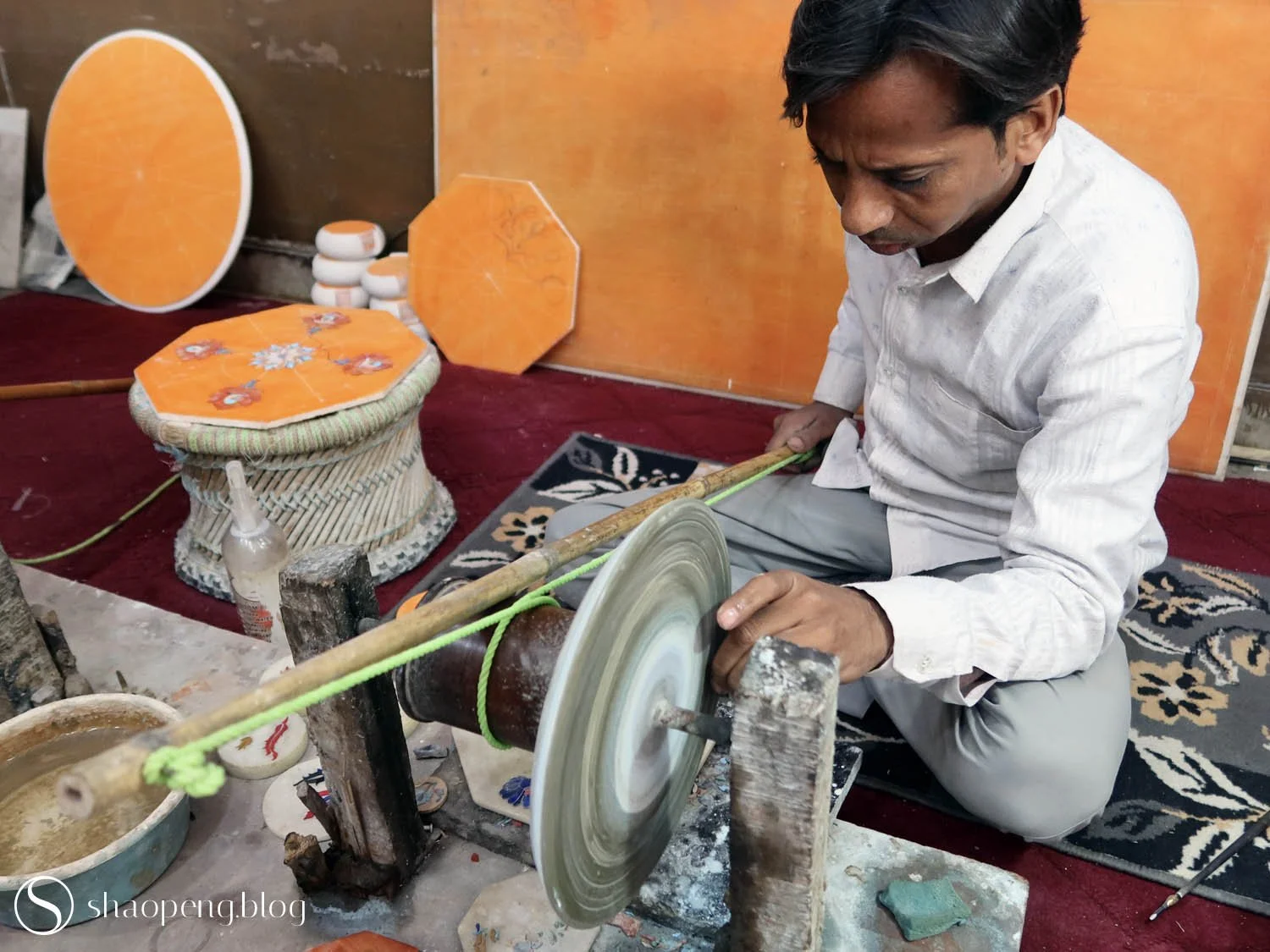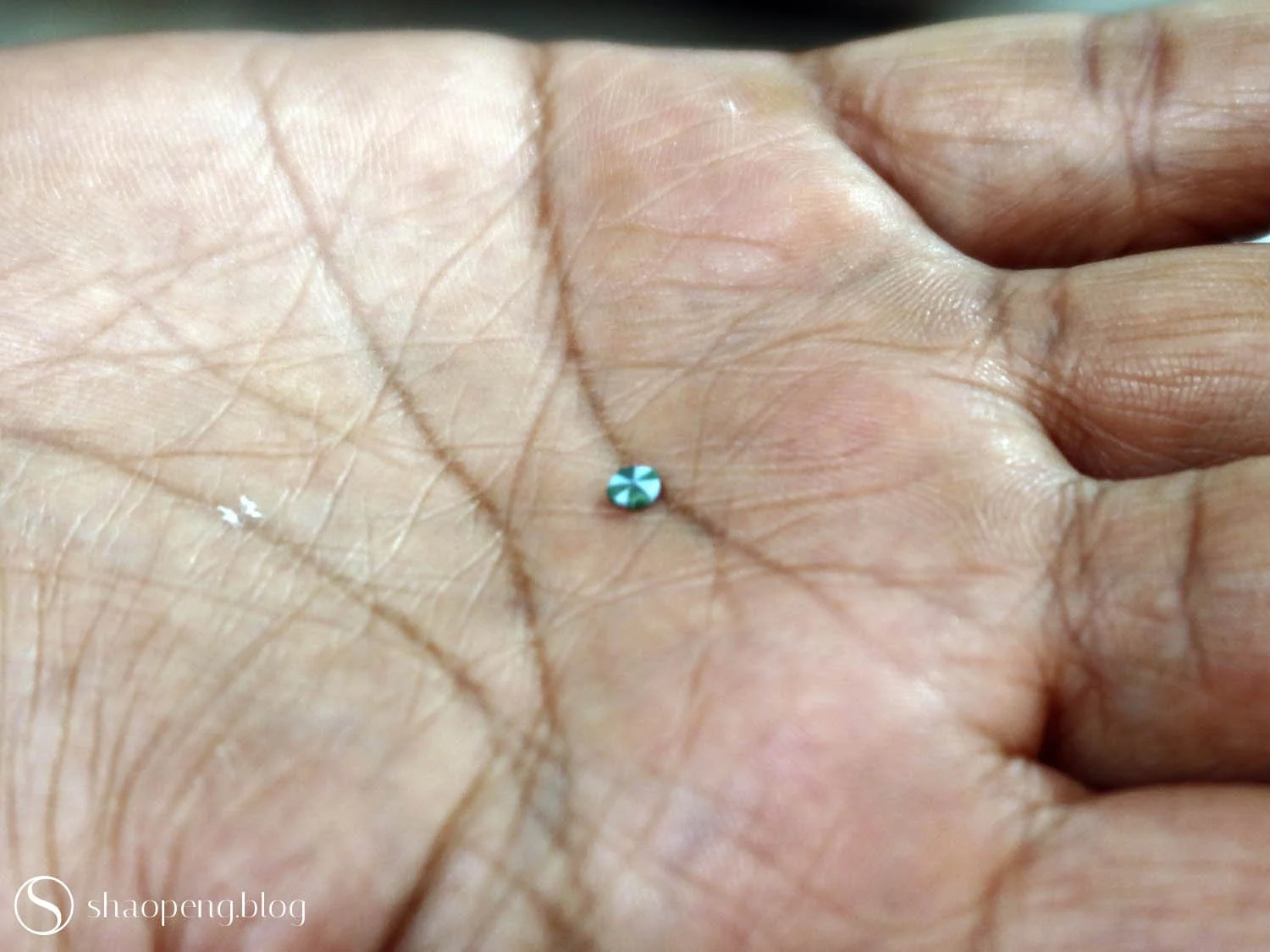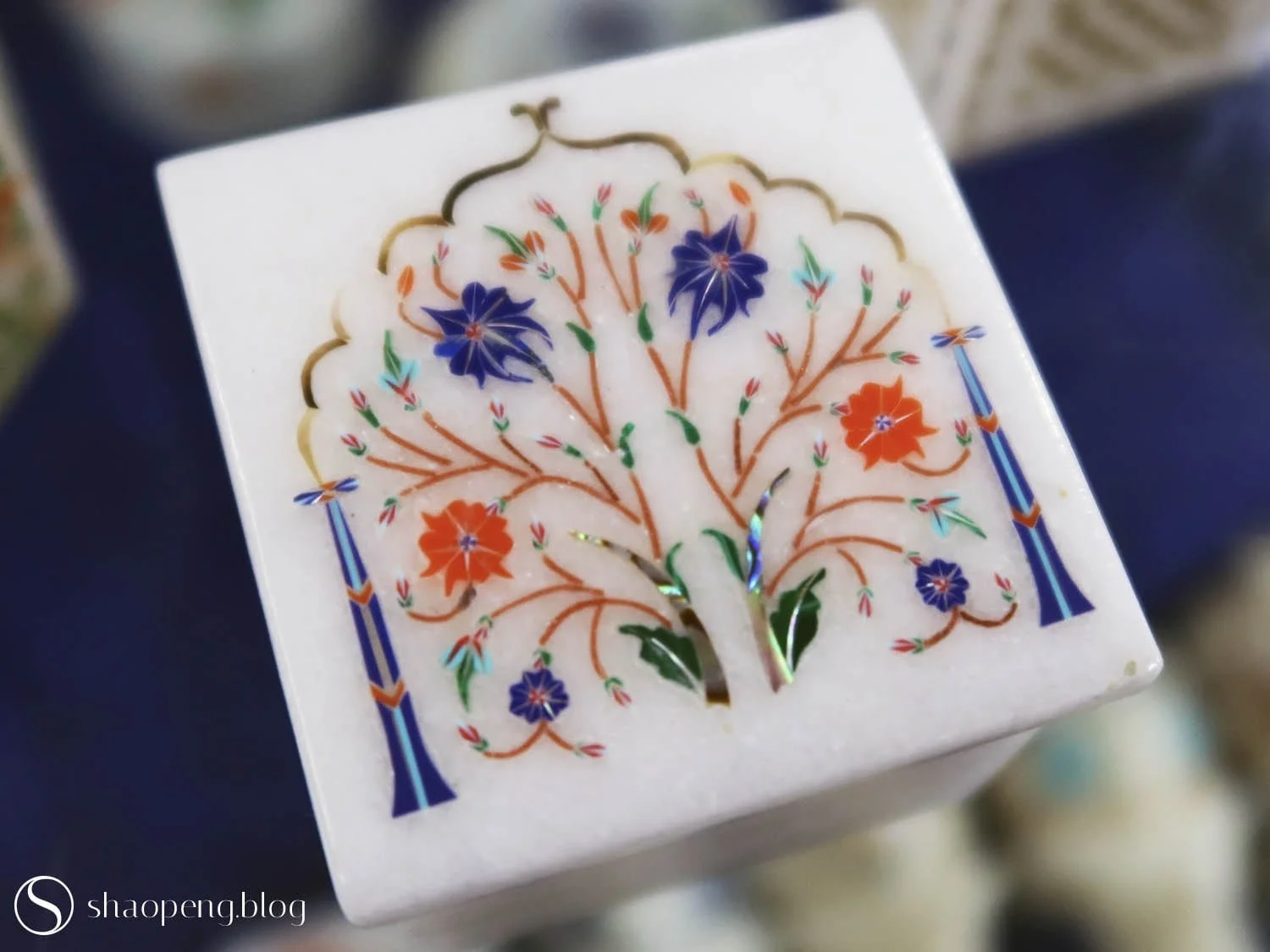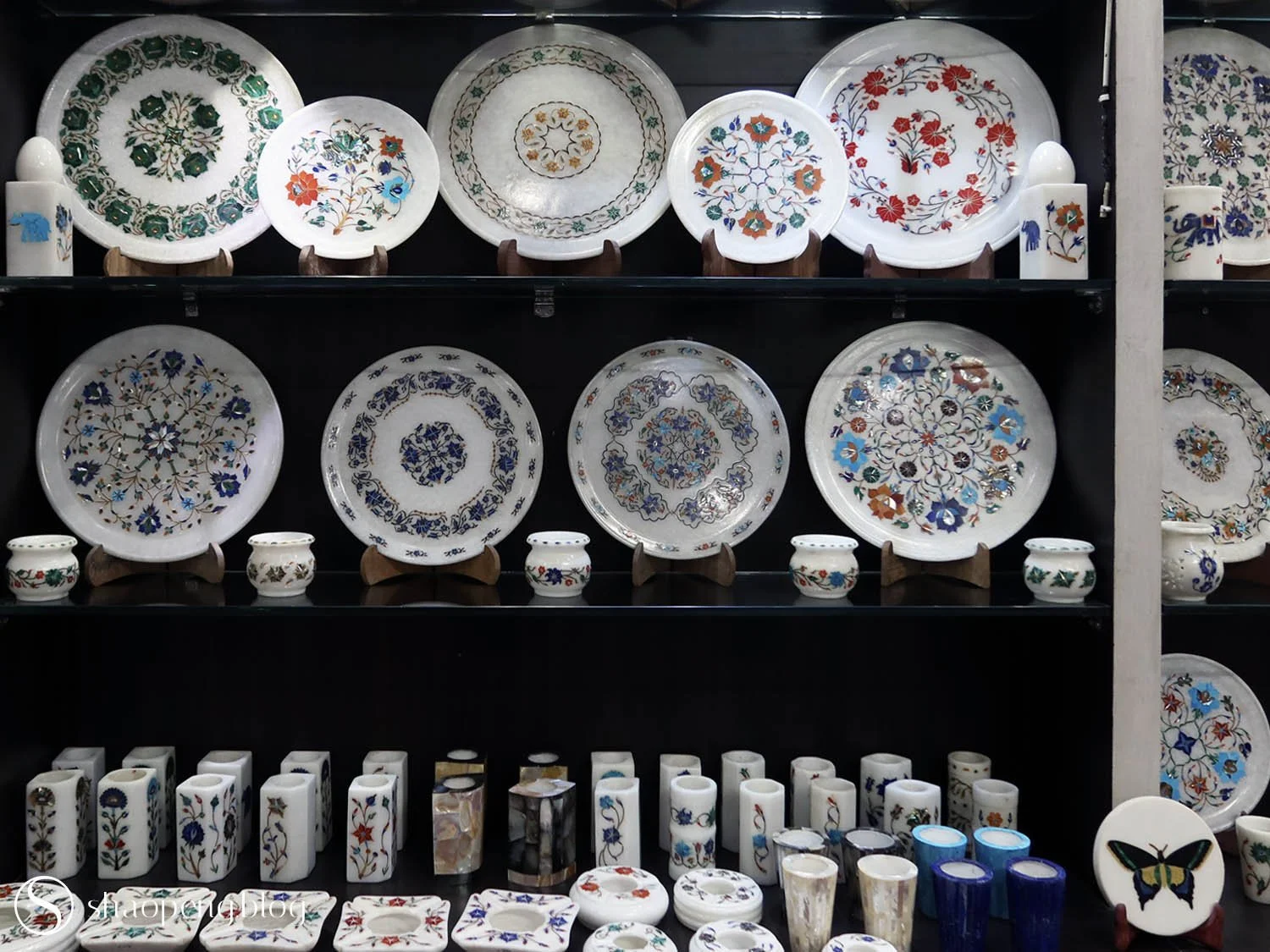Mughal Stone Inlay: A Close-Up Encounter
In the vicinity of the Taj Mahal, workshops hum with the remarkable craftsmanship that has been preserved by the descendants of Mughal artisans who contributed to the creation of this iconic monument.
Sense of Wander: ★★★★☆
Newly cut stone slices, fashioned into the shape of floral petals, are meticulously arranged on a base to create a blossoming flower design.
AGRA, India — As a jewellery designer who’s also a trained jeweller and gemstone faceter, my fascination with gemstones — both precious and semi-precious — has spanned over a decade. Experiencing the intricate artistry of Mughal inlay had long topped my bucket list, and I'm thrilled to share that my recent trip to India finally fulfilled this dream.
Mughal artisans are known as masters of the art of stone inlay, which graces their architectural marvels with a tactile softness, enhancing monuments crafted from marble and red sandstone.
In a previous article, “Legacy in Stones: Mughal Inlay Art as Treasured Indian Craft,” I delved into the unique characteristics of Mughal stone inlay, contrasting it with its Italian counterpart, pietra dura.
When in India, I was surprised to find that this exquisite art form, epitomised by landmarks like the Taj Mahal and the Tomb of I'timad-ud-Daulah, continues to thrive as a living tradition in the city of Agra. While the golden age of Mughal stone inlay has passed, the descendants of artisans who once adorned the Taj Mahal with their masterpieces still reside near this UNESCO site. Today, these artisan families continue to preserve this ancient craft, offering handcrafted inlay products for those seeking to take home a piece of this cultural legacy.
During my visit to Agra, I had the privilege of touring one such workshop. Welcomed by one of the staff, the workshop buzzed with activity as craftsmen meticulously practiced their trade. Being a skilled craftsman himself, he graciously shared insights into the traditional Mughal inlay techniques.
He introduced us to a dazzling array of stones used in Mughal inlay: turquoise from Turkey and Iran, lapis lazuli from Afghanistan, malachite from Congo and Africa, tiger's eye from India, and onyx from Belgium and India, along with carnelian, jasper, and mother of pearl — all contributing to the breathtaking beauty of Mughal inlay artistry.
An array of stones sourced from around the world enriches the beauty of Mughal inlay.
So how does it work?
Crafting Mughal stone inlay requires precision and patience.
To begin with, an artisan traces the desired design onto the white marble surface, meticulously carving a groove along the outline. Next, he delicately excavates the marble within the delineated outline, creating a recessed space for the stones to be inlaid.
When I was invited to test my skills in marble carving, I grasped the utensil provided in my right hand, imagining myself as an apprentice to the Renaissance master, Michelangelo. To my surprise, the marble proved to be far harder than I had expected, adding an extra layer of challenge to the process.
It turns out that the very marble I was working with is Makrana marble, the same material used to construct the Taj Mahal. Quarried from Jodhpur in Rajasthan, Makrana marble boasts a hardness ranging from 2.5 to 5 on the Mohs scale, surpassing the hardness of Carrara marble from Italy, which typically ranges from 2.5 to 3. This discovery took me by surprise.
The hardness of the Makrana marble indeed presents more challenge to the inlay process, demanding more time and energy to complete the process. Nevertheless, its durability offers the advantage of reduced chipping, enabling a crisper and more precise outline in the design.
This panel depicts the step-by-step process of how the stones were meticulously inlaid into the white marble base, showcasing a technique that has been passed down through generations of artisans.
The artisan carefully removes the marble within the outlined area, creating a recessed space in the white marble base for the stones to be inlaid.
As one artisan meticulously prepares the marble base, another deftly operates the wheel to cut the hard stones into desired thicknesses, shapes, and sizes. Unlike modern automatic faceting tools, this artisan relies on a traditional manual wheel, where each rotation is guided by hand. Despite the seemingly laborious nature of this process, I personally find that this manual control allows for a finer adjustment of the wheel’s speed, ultimately enhancing the precision of the cut stones.
Once the marble base is ready, the artisan embarks on the intricate task of assembling the stone slices, akin to piecing together a delicate jigsaw puzzle. Each piece, some of them so minuscule they seem almost on a nano scale, is meticulously arranged on the recessed marble surface, ensuring every detail aligns to perfection.
Throughout the process, it’s obvious that the most demanding aspect of stone inlay work is its exacting requirement for precision. It hinges not only on the accuracy of the carver tasked with preparing the marble base, but also on the meticulousness of the stone cutter, who ensures that each piece fits seamlessly into the larger mosaic.
To secure this delicate mosaic, a mysterious “magic cement” — a closely guarded recipe known only to the artisan families — is applied. After a period of air-drying, the uneven surface is carefully polished to a smooth finish, revealing a stunning marble canvas adorned with intricate stone inlay.
While this process may seem tedious to most people, in my view, mastering this craft demands nothing less than precision, attention to detail, and unwavering patience — a journey that rewards perseverance with timeless beauty.
An artisan skillfully operates the manual wheel, deftly faceting the piece of stone with his left hand while controlling the speed of the wheel with his right, allowing for precise adjustments as needed.
The art of stone inlay can transport us into a miniature world, where malachite and jasper, sliced into nearly invisible wedges, are painstakingly assembled to create intricate tiny round discs.
Mughal stone inlay: a modern perspective
After delving into the inlay process, we were guided to the basement where a showroom awaited, offering an exquisite array of marble inlay art products for sale. While many adhered to the Mughal aesthetic, some embraced the Florentine style, featuring depictions of birds and flowers on a black marble base.
The assortment of items adorned with stone inlay ranged from table tops, plates, bowls, and cups to jars, trays of various sizes, and boxes. It seemed as though this artistic tradition, once confined to architectural spaces, had found its way into the fabric of daily life, akin to its Italian counterpart.
Of particular fascination was the use of carnelian. I was shown that, when slices of carnelian were inlaid into the marble surface, it became translucent, retaining its reddish-orange hue even in the dark when illuminated by a flashlight from behind. This sparked my imagination, leaving me to ponder just how captivating the Taj Mahal would appear with its carnelian inlay illuminated by the moonlight from outside.
When illuminated from behind by a flashlight, carnelian inlays emit a captivating reddish hue in the dark.
How much does Mughal Stone Inlay cost nowadays?
You might be wondering about the pricing of these pieces, especially when knowing that they’re crafted using techniques akin to those employed in the Taj Mahal.
It’s worth noting that prices can vary significantly, often depending more on the intricacy and craftsmanship rather than the size of the piece. For instance, a large plate may be priced lower than a small jewellery box if the stone inlay work on the latter is exceptionally intricate. In some cases, the hard stone pieces are so finely trimmed that they measure less than 1 millimetre in width, rendering them barely visible without aid.
Honestly, I find their selling prices to be relatively high compared to the local standard of living, though most foreigners might consider them acceptable by Western standards. It’s important to remember that in tourist areas like these, additional charges are common, so bargaining is essential.
As a creator myself, I appreciate the uniqueness of these handiworks. Each piece is truly one-of-a-kind — even items of the same design differ due to variations in the natural patterns of the hard stone slices. That said, I was willing to pay for the craftsmanship.
In the end, I purchased a small jewellery box adorned with the intricate design of the Champak flower, a revered symbol in South Asian cultures for its auspicious and sacred significance in Hinduism and Buddhism. The moment I set my eyes on it, I was captivated not only by the depiction of the flower but also by the unparalleled craftsmanship. Each detail was meticulously crafted, with flower petals measuring no wider than one millimetre, yet delicately adorned with fine lines of mother of pearl. It’s not far-fetched to say that such precision and artistry elevate this piece to a museum-worthy masterpiece.
Thinking of exploring the Taj Mahal? Don't miss the opportunity to take home with you a piece of this Mughal cultural heritage by visiting the workshops nearby, where you can witness this timeless craft firsthand.
This jewellery box, measuring five centimetres both in width and length, commands a price three times higher than the one I purchased, owing to its intricate craftsmanship and meticulous hair-like inlay work.
Once a decorative technique confined to architectural spaces, Mughal art inlay has found its way into the fabric of daily life.

